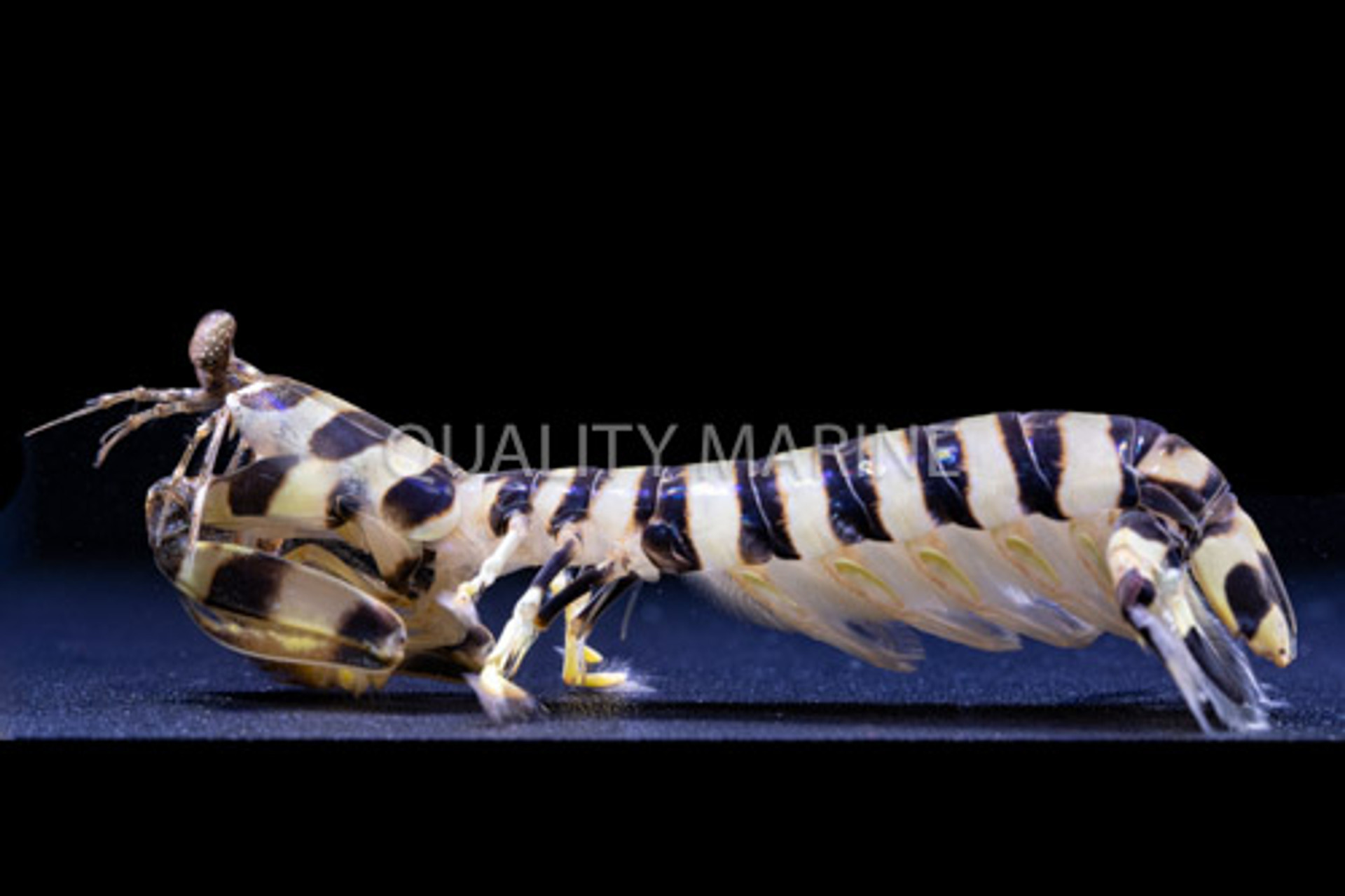Prehistoric Predator: The Zebra Mantis

When is a shrimp not a shrimp? Enter the Stomatopods, the mantis shrimp an order that has existed far longer than humans, over 340 million years! While their common name suggests they are shrimp or may even be related to terrestrial insects such as the praying mantis (order Mantodea), they are neither. One of the largest distinguishers of mantis shrimp from other crustaceans is their hunting adaptations. The Mantis shrimp possesses a raptorial claw that they either use to spear or smash prey items as well as defend their territories.

The Zebra Mantis Shrimp (Lysiosquillina maculata) falls into the category of a spearer. After digging a burrow in the substrate the Zebra Mantis lyes in wait of smaller fish and other crustaceans to ambush. When the ambush finally comes, it takes place incredibly quick, to the order of 15-25 meters per second (or 50mph). With other mantis species that possess the smasher appendage this speed can rival that of a small round fired from a gun, the rumors are true that these can crack thin panes of glass. While this is something to keep in mind regarding their husbandry its of much less concern with spearer mantis such as the Zebra Mantis. In fact in the past when live rock was harvested to a larger degree in the hobby, hobbyists would listen out for pest mantis as the spearing or smashing action is so quick that is makes a rather obvious audible noise. Another aid in feeding and protecting that Stomatopoda utilize is their incredibly adept eyesight. A Mantis Shrimps visual acuity is amongst the best if not the best in the entire animal kingdom. Their photoreceptors can see a wide range of UV light and their eyes can position themselves independently for a large field of view. They also possess oar like appendages on the underside of their tails which allow them to move surprisingly fast in the water column for a short period of time in comparison to other crustaceans. To further emphasize how well equipped and smart these creatures are, they are perhaps the only invertebrate that can use both its amazing sense of eyesight in combination with the ability to smell to identify individuals, even of the same species. This can be useful as a defense as it would allow the mantis to identify an earlier predator that it escaped from preemptively on the next round, the same goes for prey that the missed out on. They pair monogamously when mating with the females displaying maternal care to the clutch of eggs.

In captivity, the Zebra Mantis Shrimp is best kept as a species only display. Though they are slightly sexually dimorphic, with the males having larger spearing appendages than the female, its far too risky to attempt to pair them up unless they are collected as a mated pair. Any other tank mates that are smaller, of similar size or have soft bodies are on the menu. The good news about keeping in a solitary setting is it offers you a chance to design the display system not only around the animals needs but you can also manipulate substrate and rock work for the best viewing results. Place rock strategically along the bottom of the aquarium or supported by PVC. It is important to do this rather than place rock directly on the substrate as your mantis may burrow underneath only to be crushed. You can preemptively create your own burrow for your new pet that allows you to view the entirety of its body even when in hiding. A brilliant example of this is displayed at the Cabrillo Marine Aquarium in San Pedro, Ca where they display their temperate California Mantis Shrimp (Hemisquilla ensigera). What they have done is cut the PVC pipe down the middle vertically and then placed the cut side against the front pane of the aquarium glass. When the mantis retreats into the PVC buried in the substrate for protection, the animal is still visible to the observer. If you dont go this route youll also want to add some larger pieces of substrate such as crushed coral and seashells for the mantis to reinforce its self-created burrow with. If you want to observe their preying behavior small fish and crustaceans can be added to the aquarium but for the most part this I necessary and expensive as most mantis will readily accept frozen food such as silversides and krill superba.
The Zebra Mantis have great personalities once they are comfortable and will even show interest in the aquarist or observer using its advanced eyesight, as mentioned above. If displayed properly with diligent husbandry, they are resilient and relatively long-lived, making them one of our favorite crustaceans to display.